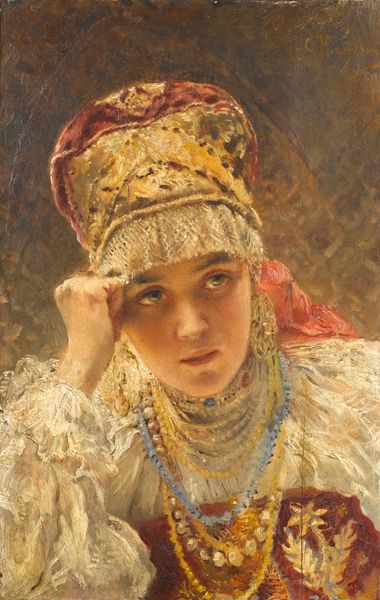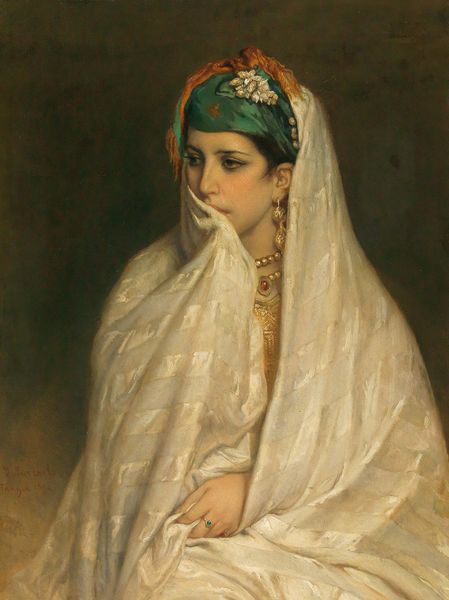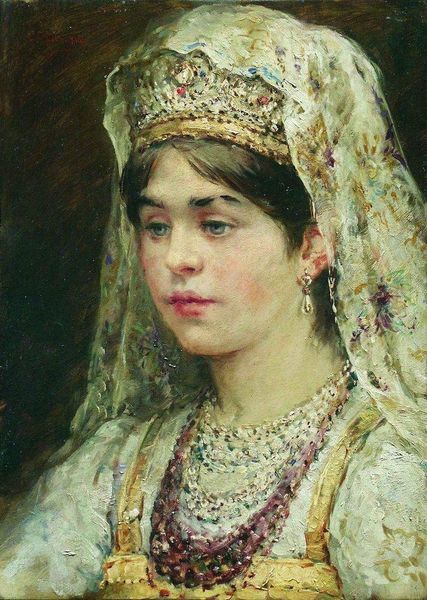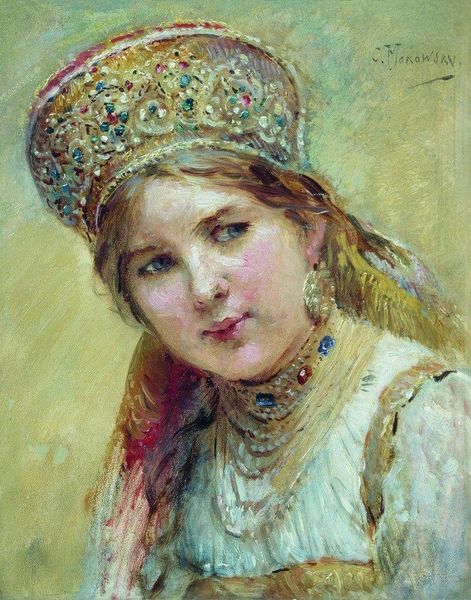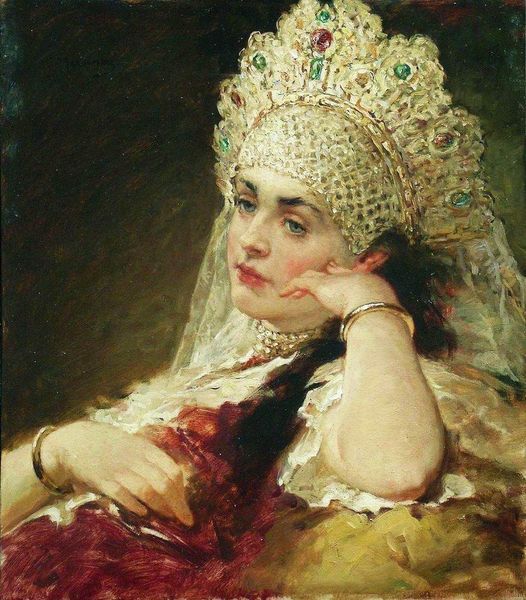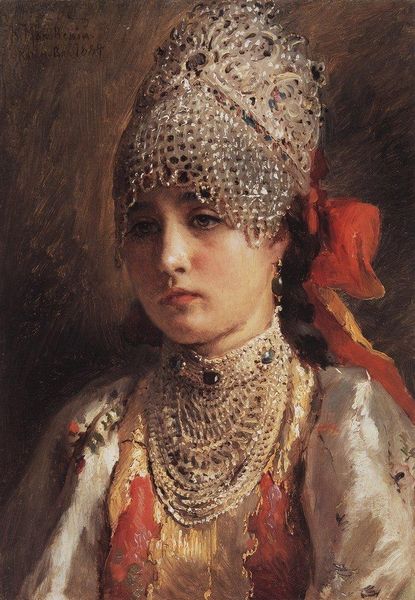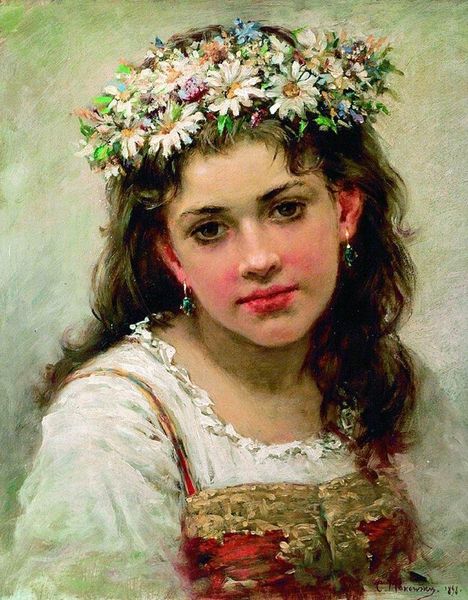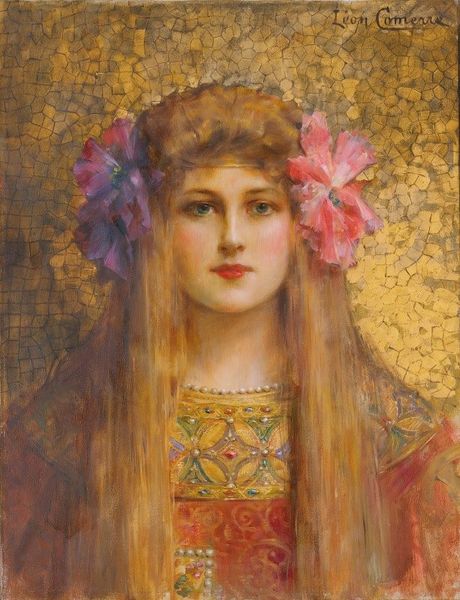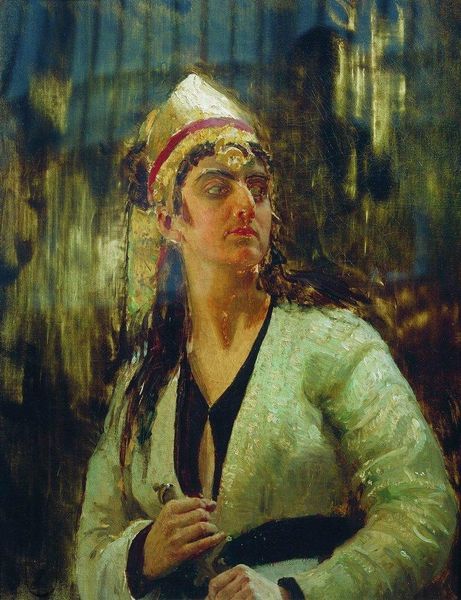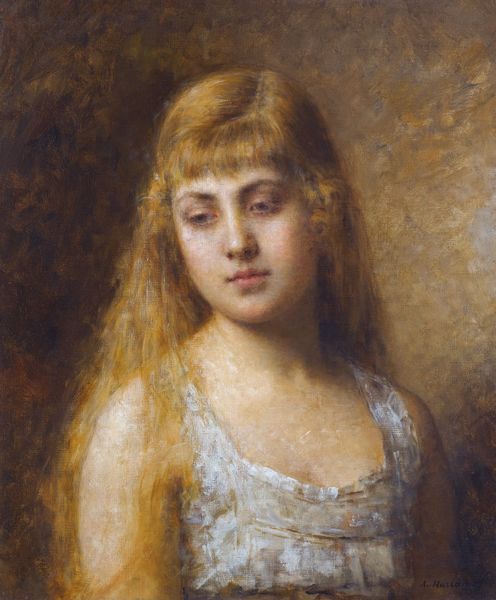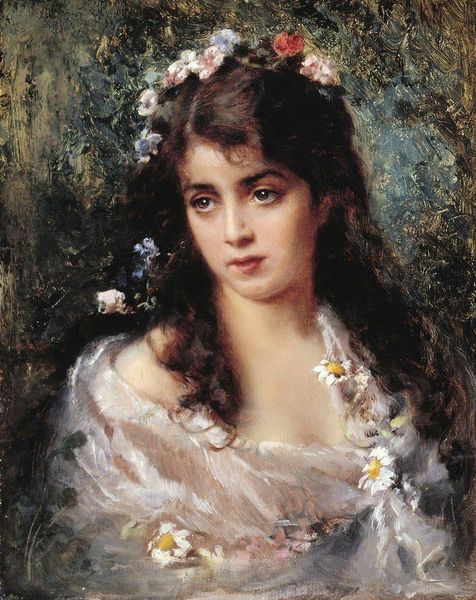
Copyright: Public domain
Curator: Well, hello there! Looking at "Boyaryshnya" by Konstantin Makovsky from 1880, painted with oil... What's the first thing that leaps into your mind? For me, it feels like peering into a dream, soft and filled with light. Editor: Immediately, I notice how the painting romanticizes an antiquated ideal of Russian femininity and aristocratic status. This representation of womanhood conveniently ignores so many other aspects of the social hierarchy. Curator: You're right, of course. There is a dreamy, almost idealized, quality. But that headpiece! It feels so incredibly real and present—do you think it tells us something more than simple social status? Almost a heavy crown of responsibilities maybe? Editor: The elaborate kokoshnik headpiece does carry heavy symbolism. By the late 19th century, the kokoshnik becomes heavily romanticized, a potent emblem of Russian national identity, even used at court balls to underscore imperial allegiance. Curator: Fascinating how an object transforms like that. And I keep thinking about how Makovsky chooses to depict her—the downward glance, the blush on her cheek. It's a pose full of almost naive grace. Almost. Editor: Indeed. The pose, coupled with the clear affluence depicted through her attire, presents a carefully constructed image, carefully shaped by both the artist’s perspective and social expectations for women during this time. The painting reinforces notions of beauty, class, and cultural identity in a very specific and controlled way. Curator: You've peeled away the surface and placed her so firmly in context. Still, as I gaze, the colors sing; that muted palette creates this sort of melancholic melody within me... it touches the core. I find her beautiful and intriguing. Editor: Understanding how this image circulated, who commissioned it, and its role in broader political dialogues provides a crucial lens through which we can view both the aesthetic choices and the societal narratives at play. Curator: That's an insightful view. It certainly allows for richer discourse than just observing the "beauty". Editor: Agreed. It’s about placing the "beauty" in conversation with the realities of its creation.
Comments
No comments
Be the first to comment and join the conversation on the ultimate creative platform.

